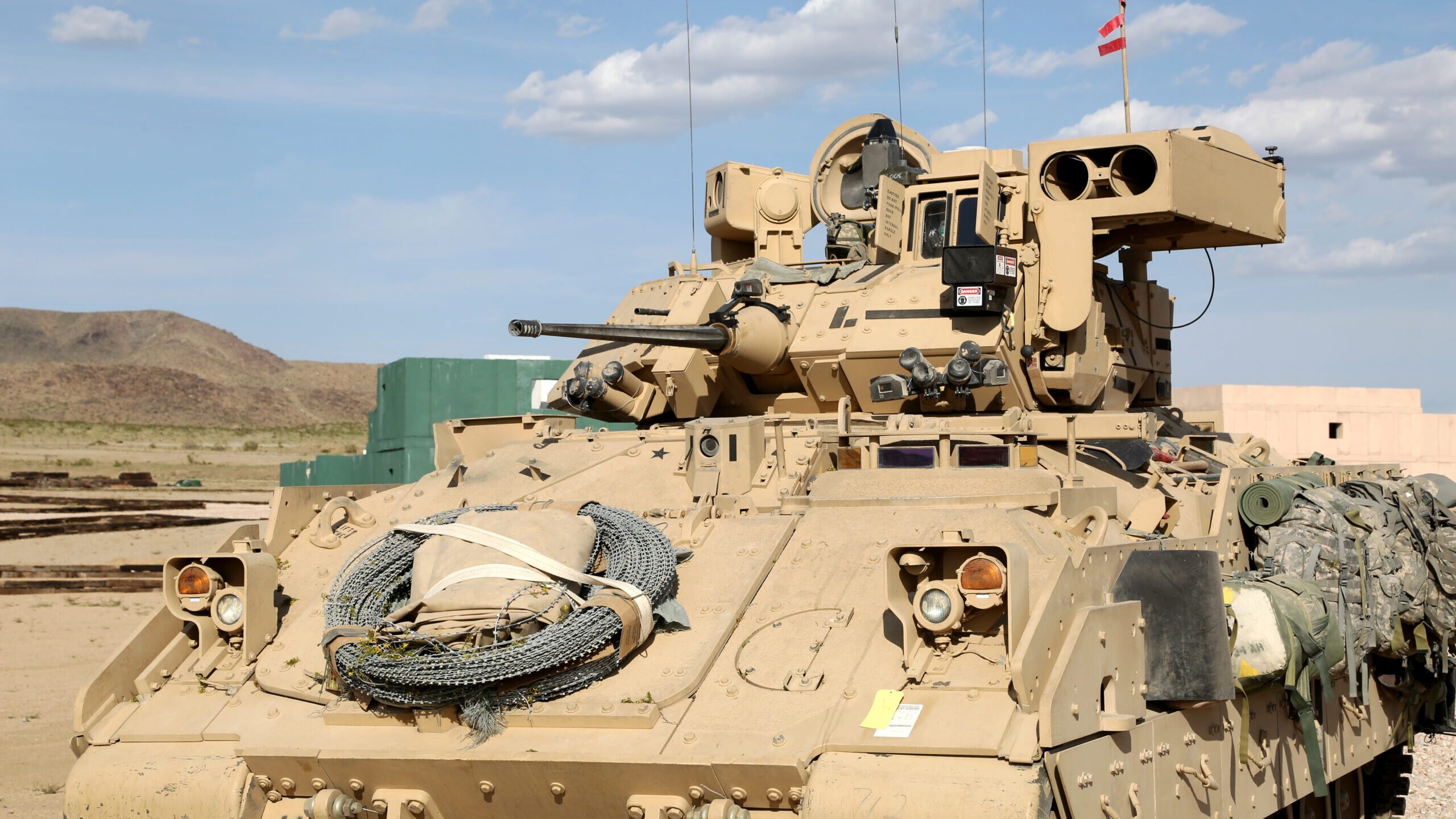
The Army is seeking to replace the Bradley Fighting Vehicle through its Optionally Manned Fighting Vehicle program.
(Spc. Randis Monroe/US Army)
WASHINGTON: While Army leaders spent last week touting that the majority of the service’s modernization priorities would be in prototyping next fiscal year, the service’s top acquisition nominee warned today that leadership should prepare for unexpected difficulties ahead.
Doug Bush, President Joe Biden’s nominee to be the assistant secretary of the Army for acquisition, logistics, and technology, told the Senate Armed Services Committee at his confirmation hearing Tuesday that the “central challenge” he expected to face as the service’s top acquisition official is “successful execution” of guiding prototype efforts into production and fielding.
“This process is likely to be challenging in many cases due to the aggressive timelines currently assumed for these programs. It is also likely to be challenging because of the normal friction points that occur when a complex system moves to this more detailed stage of development and production,” he wrote in his advance policy questions.
“Testing will reveal things that need to be fixed. Early production efforts will likely reveal currently unforeseen difficulties in ramping up production at scale. The Army’s needs may shift, which could disrupt fielding schedules. And finally, delays or difficulties with some programs may lead to cost growth.”
While in line with the traditional comments seen from acquisition nominees at hearings — each of whom always says their top priority will be to keep programs on track and under budget — Bush’s comments are notable given the sheer volume of prototypes the Army is counting on to transition to full programs in the coming years, from its tactical network to next-generation helicopters and ground vehicles.
His comments also follow Army Chief of Staff Gen. James McConville’s pledge at the annual Association of the United States Army that 24 of the Army’s 31+4 signature modernization systems will be in prototyping by fiscal 2023.
Just this month, a key prototyping effort hit a snag. The service’s Integrated Visual Augmentation System, tactical augmented reality goggles that display battlefield data to soldiers, is facing a “several” months delay, the Army announced late last week; on Monday it was revealed that the delay was due to technical issues with the expanded field of view that hardware provides soldiers.
In his advance policy questions, Bush stressed the importance of flexible acquisition practices, through the Middle Tier Acquisition pathway, in allowing the service to rapidly prototype and deliver cutting-edge capabilities to soldiers. He cited the IVAS program as a test case of the importance of flexibility contracting practices to adjust to meet soldiers needs.
“IVAS is an excellent example of an MTA rapid prototyping effort that is adapting its schedule and funding to continue evolving the system to better meet the Army needs, as evidenced by shifting Initial Operational Test and Evaluation in order to improve functionality and reliability,” Bush said.
Bush, whose nomination was announced while he was serving as the acting acquisition chief told senators in his written answers that another top priority would be improving the Army’s acquisition of software and plans to “accelerate and expand” previous software purchasing practices. He will also focus on improving the Army’s focus on both supply chain security and cybersecurity.
“The Army faces a fundamentally different threat in this regard as compared to the post-Cold War era and must adapt its policies and practices to enable delivery of systems and capabilities uncompromised by aggressive efforts by China, Russia, and others to disrupt them before they are fielded,” he wrote.
Bush added that he’ll focus on ensuring “realistic operational testing,” including cyber testing.
“Taking a little extra time and effort to fully test systems up front ensures that contractors are held accountable and problems are identified on test ranges rather than in combat,” he told senators in his opening statement.
Senators asked Bush in his advanced policy questions about the Army’s work on long-range precision fires, a critical capability as the military pivots toward fighting in the Indo-Pacific, one also being pursued by the Navy, Air Force and Marines. Avoiding duplication, Bush said, hinges on a Joint Warfighting Concept that “clearly defines” the role of each service in a joint fight.
“Taking a little extra time and effort to fully test systems up front ensures that contractors are held accountable and problems are identified on test ranges rather than in combat,” Bush wrote.
Finally, Bush expressed confidence in the Army’s current acquisition approach to the Optionally-Manned Fighting Vehicle, the latest of several attempts over the last 20 years to replace the Bradley Fighting Vehicle. The Army didn’t provide vendors with strict requirements, which failed previously. Rather, the Army provided vendors with a “characteristics of need” document that allowed companies greater flexibility.
“My assessment is that the current multiphase OMFV program strategy is a balanced way to procure a robust platform with sufficient size, weight, and power to integrate additional capabilities over time,” Bush wrote.






















